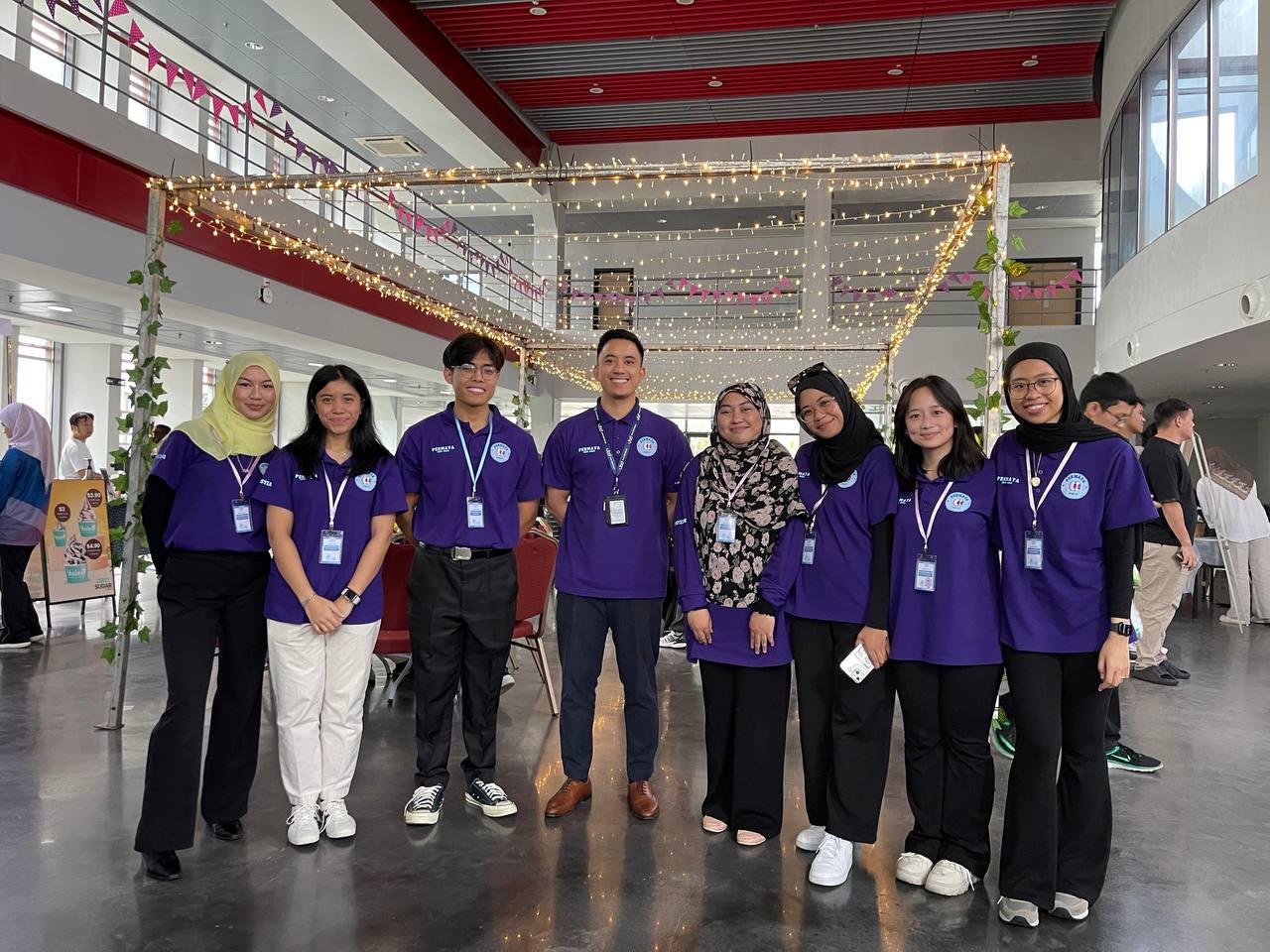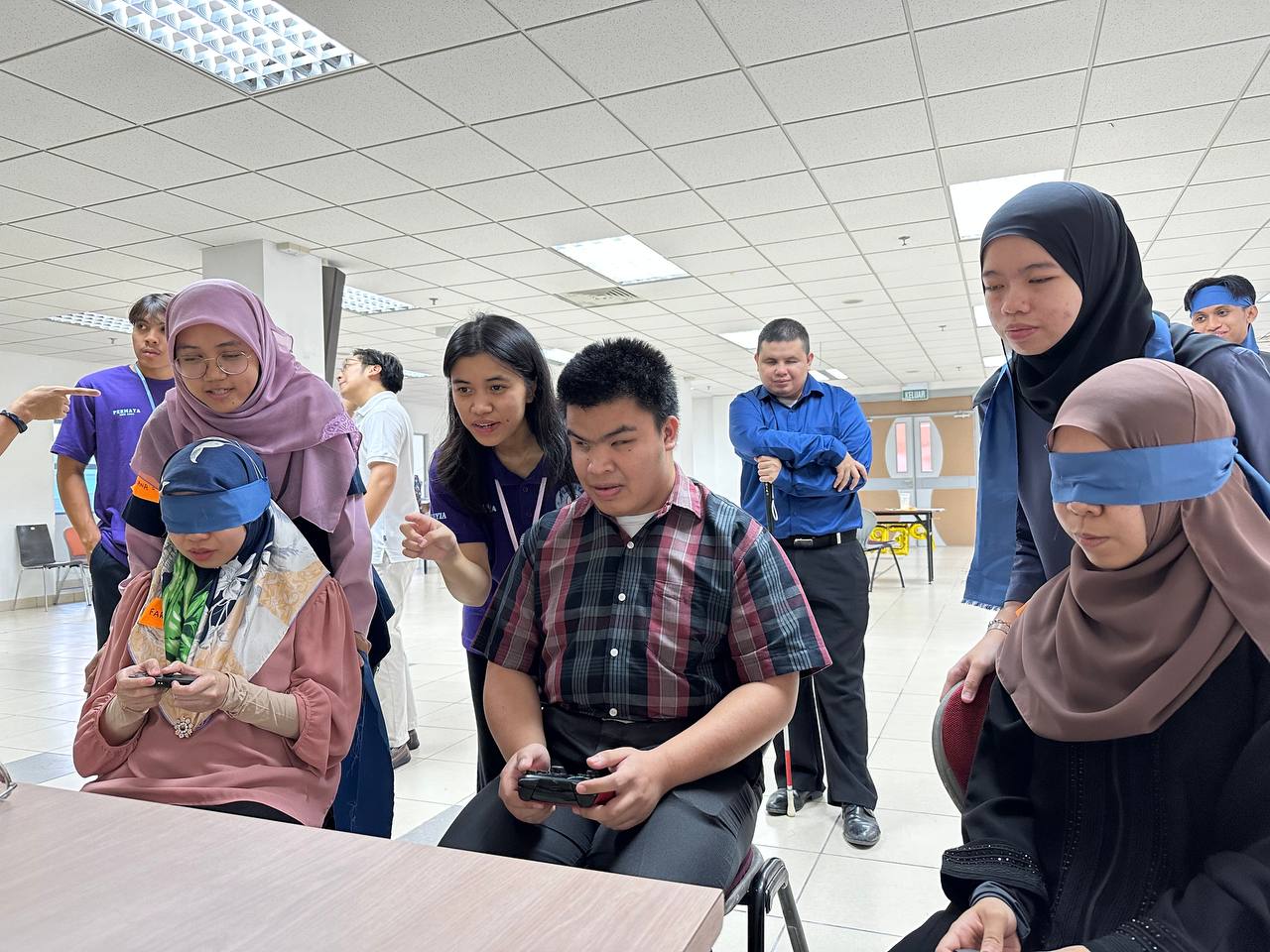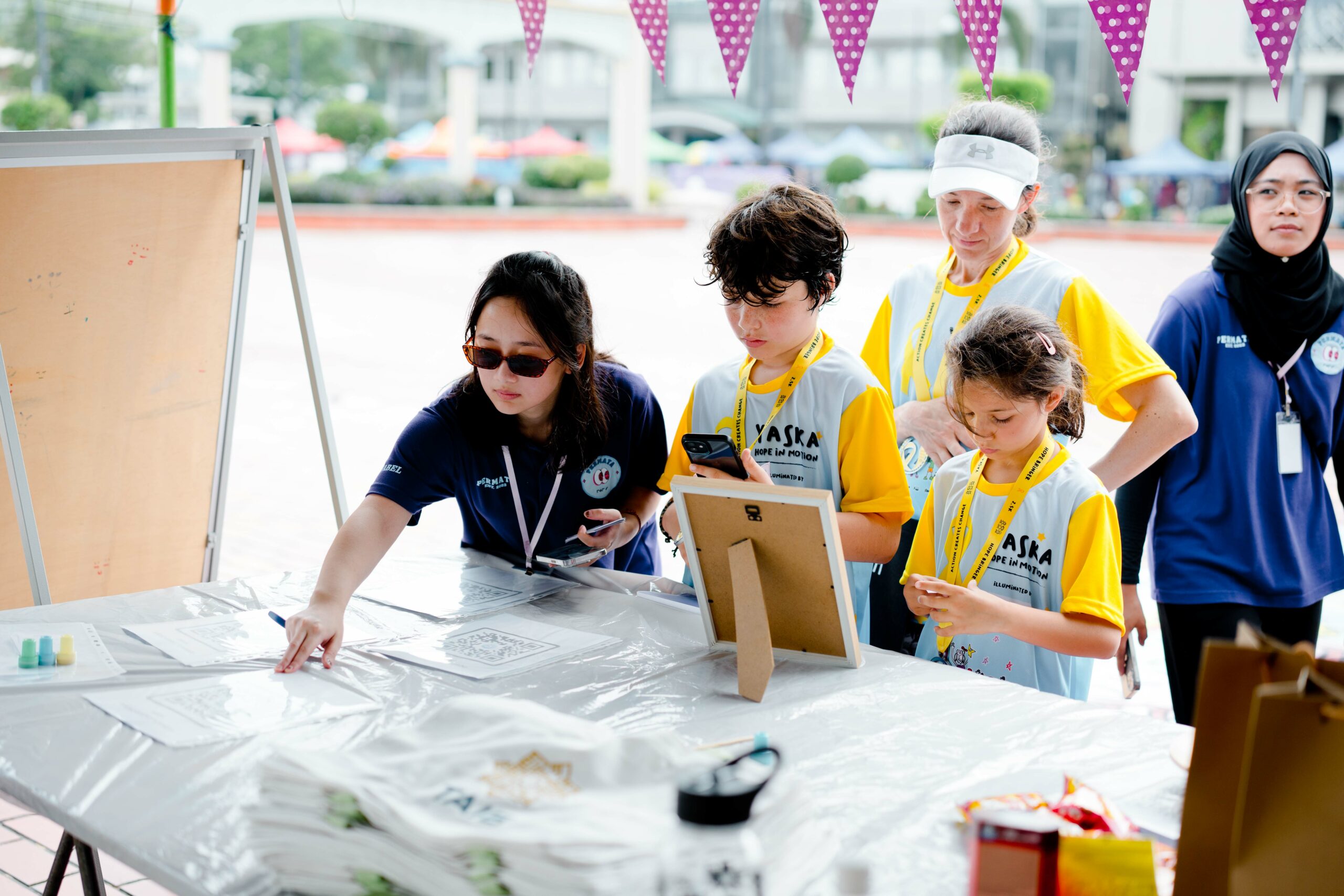Demystifying visual impairment and nurturing genuine understanding in communities.
There is still a wealth of knowledge surrounding ocular diseases and their impact on communities that are often beyond the public’s reach.
While discussions about eye health tend to circle around common topics like cataracts – what they are, who they affect, and prevention strategies – a dedicated group of third-year medical students are taking a more citizen-centred approach.
For this student-led initiative operating under the banner of PerMATA, the focus isn’t merely on disseminating information about eye diseases; it’s about engaging with the communities affected by these conditions, particularly the visually impaired.

Comprising university students from the Pengiran Anak Puteri Rashidah Sa’adatul Bolkiah (PAPRSB) Institute of Health Sciences, Universiti Brunei Darussalam, PerMATA’s mission is rooted in fostering genuine understanding within society about the complexities of providing meaningful support to these communities.
Led by Nur Izzah Insyirah binti Mohd Zin and co-leader ‘Abdurrahman bin Haji Ahmad Yazid, PerMATA is dedicated to nurturing deeper connections between the visually impaired and the wider community.
They hope to achieve this by educating and empowering caregivers with vital skills and knowledge, enabling them to provide meaningful support to individuals with visual impairments through a diverse range of activities.
Bringing clarity
Part and parcel of this effort is actively working to dispel misconceptions about blindness and debunking prevalent myths by providing accurate information to the public.

According to the group, only 18 per cent of those with significant visual impairment are totally blind, as most have low vision and can still perceive light.
There are also three distinct types of blindness: low vision, which refers to a permanent reduction in vision that cannot be corrected; total blindness, indicating a complete absence of light perception; and congenital blindness, representing vision loss or severe impairment that is present at birth.
Following this, PerMATA stressed on the importance of recognising the diversity within the blind community.

“Their needs vary widely; some might not use white canes or guide animals because they’ve developed alternative strategies for getting around,” said the team lead.
Blindness doesn’t diminish their other senses, she shared further, as blind or visually impaired individuals often adapt uniquely, such as by learning braille.
While some may develop heightened senses due to brain rewiring, this perception isn’t universal among all blind people.
Despite the challenges they have to endure, PerMATA emphasised that individuals who are blind can lead fulfilling lives, engaging in activities like raising a family, pursuing meaningful careers, participating in sports, and travelling.
They achieve these feats by adapting their approaches, using skills acquired through rehabilitation and training.
“Nowadays, technology plays a pivotal role in their lives, enabling them to utilise computers, mobile phones, applications, and other tools, enhancing their independence and expanding accessibility to the world,” continued Nur Izzah.
Shining a light on eye health
In addition to fostering understanding about the different forms of blindness, PerMATA also underscores the significance of eye health awareness, particularly in the context of cataracts, championing early detection and timely intervention for this disease.
Cataracts, a condition where the eye’s lens becomes cloudy, primarily affects older individuals, with factors like age, radiation exposure, toxins, diabetes, smoking, and genetics heightening the risk.
“Our lens contain protein and water and is arranged in such a way to keep the lens transparent. Cataracts occur when the proteins clump together over time, turning the lens opaque and cloudy,” continued Nur Izzah.
When the lens clouds over, she continued to explain, it obstructs light, leading to blurred vision, faded colours, and sensitivity to light, noting that reduce the risk, regular eye check-ups, avoiding unnecessary steroid use, quitting smoking, wearing sunglasses, and maintaining a healthy lifestyle are crucial.
“Other risks include diabetes, smoking, alcohol drinking, medications, obesity, family history or genetics and eye trauma.
“In the case of other risk factors such as diabetes, a cataract forms when glucose interferes with water content and this will also in turn cause the lens to become opaque and cloudy.”
PerMATA held a series of impactful events throughout the year, such as collaborating with the Brunei Darussalam National Association of the Blind, to organise an orientation and mobility training, which included a book fair that showcased braille.
As a wrap-up of their initiative, PerMATA had an educational booth set up at the TEGAS Walkathon earlier this month which included engaging activities, including interactive cataract simulations.
Additionally, the booth showcased augmented reality experiences designed to enhance public understanding of various visual impairments, such as cataracts, glaucoma, diabetic retinopathy, and macular degeneration.
Other members of PerMATA include Siti Nur Qasrina Batrisyia binti Haji Abdul Maizan, Wan Hana Syabrah Iylia’ binti Mohammad Kasim, Nur Azima Diyanah binti Abdullah, Dowsabel Tan Wei Qian and Batrisyia binti Haji Mohammad Hairul Radzi. – Rizal Faisal






